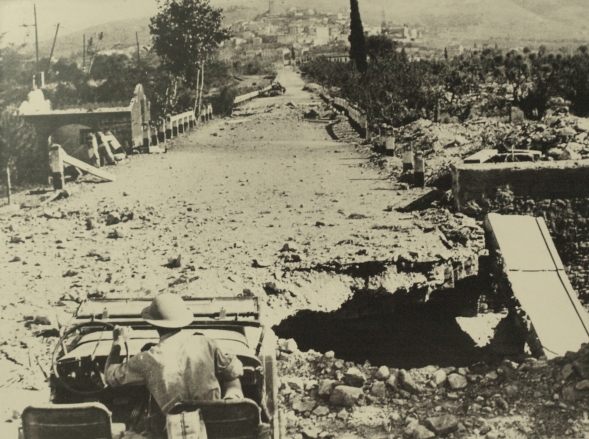Welcome to the new blog for the Landscape Painting in Italy travel-learning course from Ohio Wesleyan University. In late May a group of ten students will accompany Fine Arts professor Frank Hobbs and Humanities-Classics professor Sally Livingston to Italy for two weeks of painting and cultural immersion in Tuscany and Umbria.
Our home base will be Cortona, a beautiful hill-town above Lake Trasimeno that was built by the Etruscans around 700 B.C. Cortona’s location makes it ideal for jumping off to many of the neighboring towns and regions that have figured so importantly in the history of art since ancient times, and particularly the Renaissance. Piazza Signorelli, one of three main piazze of Cortona, bears the name of native son, Luca Signorelli, who decorated the cathedral at Orvieto during the Renaissance period, and later died in Cortona, purportedly by stepping off a scaffolding while painting. Centuries later, another painter of note called Cortona home, Italian Futurist Gino Severini. His elaborate mosaics for the 12 Stations of the Cross punctuate the arduous trek up the mountain-side from Cortona’s center to the church of Santa Margherita, a 13th century healer who became the patron saint of the town.
From Piazza Garibaldi you can see Lake Trasimeno, third largest in Italy, just around the edge of the mountains that ring the eastern side of the lake. One of our painting sites along the lake is the site of an ancient battlefield where on June 21, in the year 217 B.C., the Carthaginian general Hannibal and his “barbarian” forces drew the Roman consul Flaminius and 30,000 soldiers into a trap, destroying two-thirds of the Roman forces.
In June of 1944 some of the fiercest fighting of World War II took place just across the lake to the southwest as the British and Italian partisan forces pushed north in 1944, driving the Nazis from the Trasimeno Line which stretched across Italy from the Mediterranean Sea to the Adriatic, just south of Lake Trasimeno. The photo below was taken in Castiglion Fiorentino, about 12 kilometers from Cortona.
Italy’s contribution to the development of landscape painting in the 19th century is less celebrated than it’s French counterpart but awareness has grown through the efforts of scholars like Peter Galassi, whose work has focused on Corot’s painting sojourns in Italy in the early and middle parts of the century, as well as on the European tradition of traveling and painting in Italy.
Norma Broude, another important scholar of 19th century Italian painting, illuminates the central role that Tuscany played in the development of Italian landscape painting in the mid-19th century. The city of Florence was home to a group of painters who met at the Caffe Michelangelo, still there, although no longer a cafe. Dubbed I Macchiaioli by a hostile critic, these artists were known for their direct, rapidly executed, small-scale studies painted “all’aperto” (in the open.) One of our destinations will be the Palazzo Pitti in Florence where a significant collection of these small jewels can be viewed.
The Macchiaioli at the Caffe Michelangelo, 1856
Present day site of the Caffe Michelangelo, Via Cavour in Florence
This Spring our group will walk in the footsteps of Corot and the Macchiaioli, and countless numbers of artists of past centuries who wandered in Italy for much the same purposes as we do – to study its art and history, and to paint the landscape. We’ll spend the days working on site, either in town, out in the country, or in neighboring towns. Our outings will combine painting with visits to museums and churches to view art, visit artists in their studios, and reflect on the rich, long history and culture of Bell’Italia. Evenings will find us back at our lodgings for cena (dinner) after which everyone will be free to explore the town and to enjoy all that Italy has to offer in the present.







